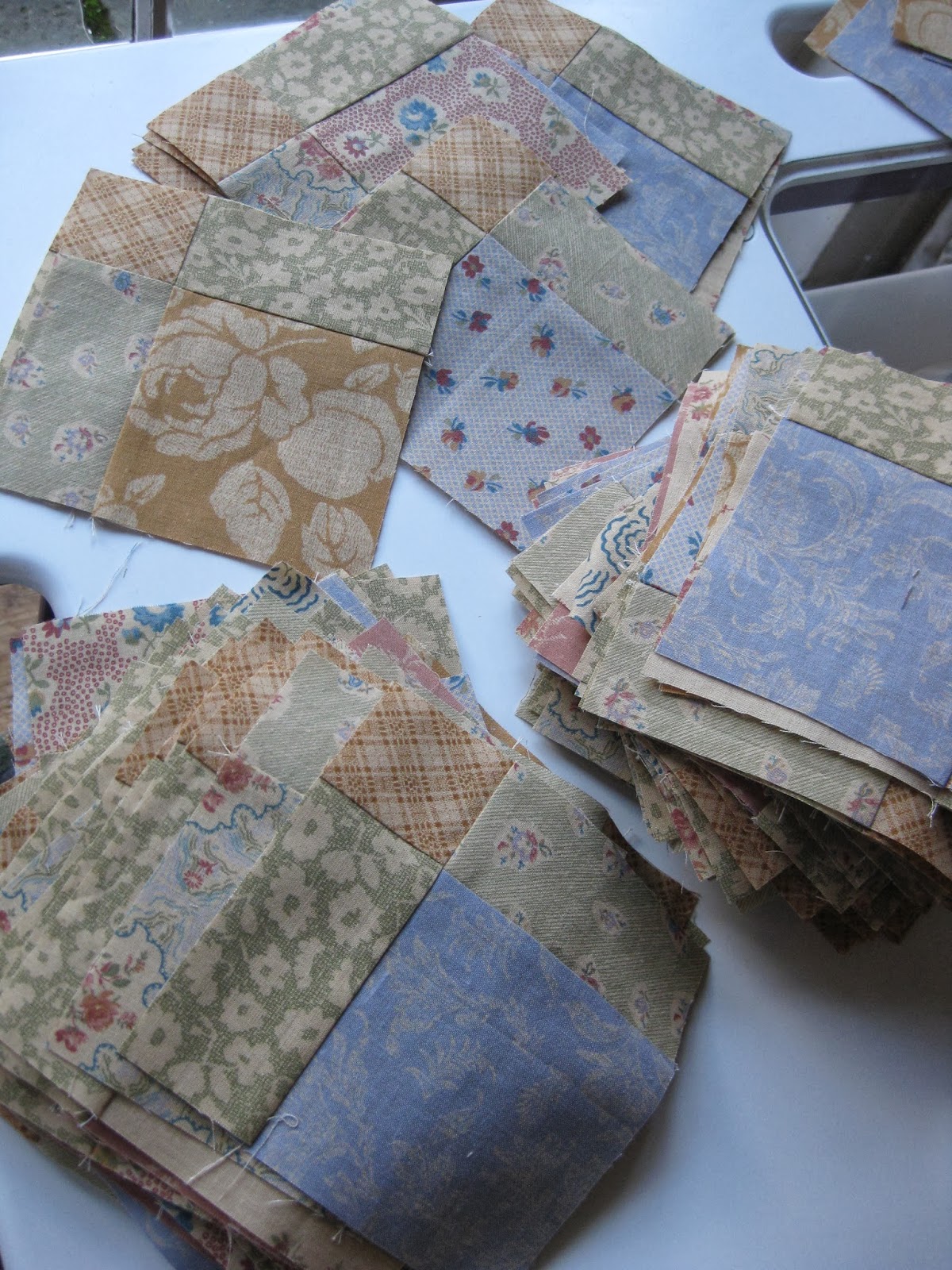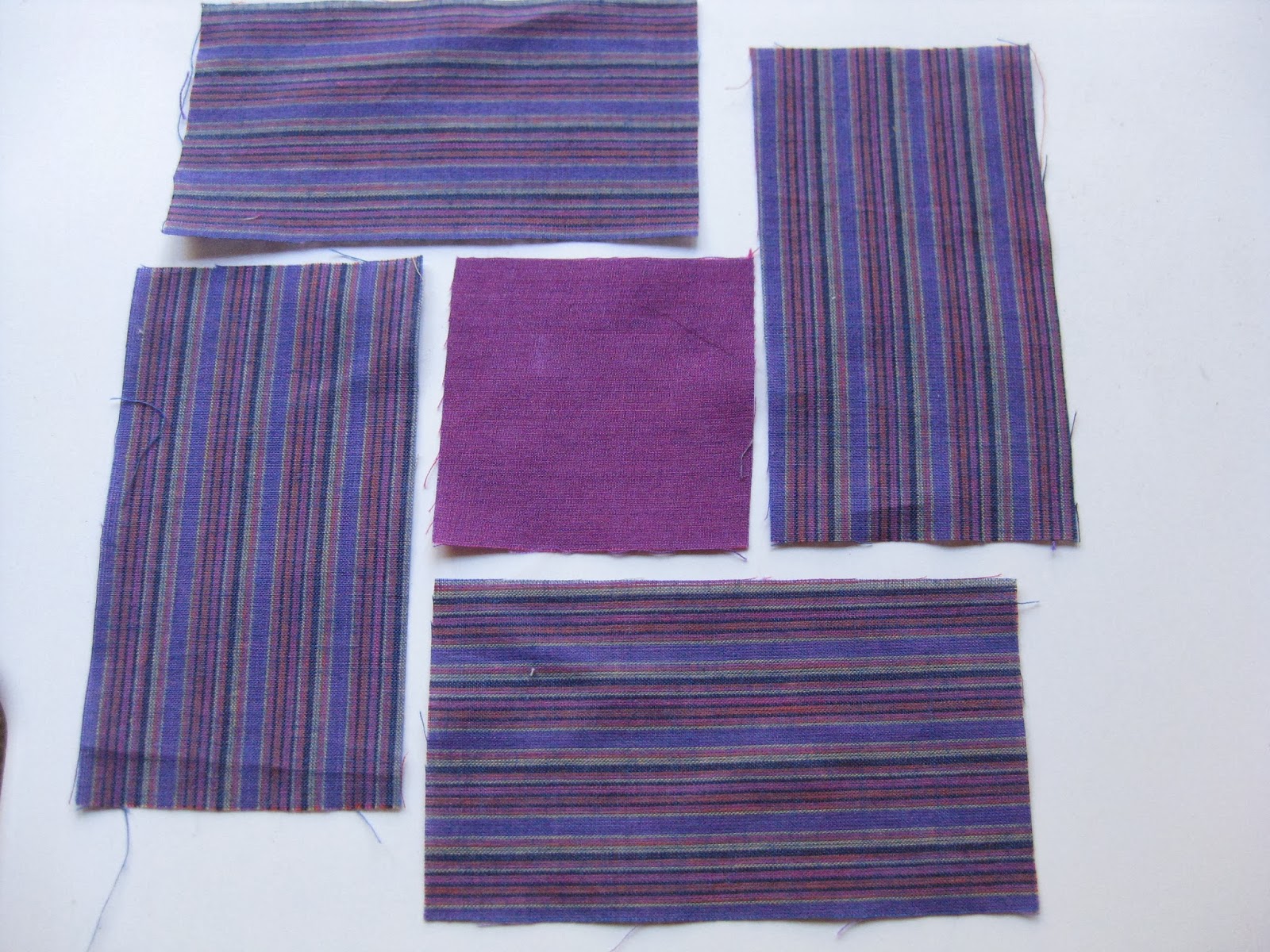I made a twofold promise to myself to try this year to use more of my stash and to finish some of my longstanding UFOs, so no time like the present, I thought.
Here is a glimpse of what I have been messing about with, both very much works in progress but very different:

First up, I have had this fabric in my stash for at least 10 years. It was a small collection called Hope Chest by Springs International, and I wanted to make a quick and simple something just using the bundles of fat quarters I had. There were ten different fabrics, and I had about half a metre of each.
I chose Disappearing Nine Patch as it's a bit more interesting than simple squares but really fast to make. Here's a tutorial from Missouri Star Quilt Co if you haven't already come across this pattern.
The speedy cutting, sewing and re-cutting was just the therapy I needed. Now I have a great stack of pieces ready to lay out on the design wall. Watch this space!
By contrast, the UFO I pulled out to progress has lots of small pieces which take ages to cut and stitch back together. It is the Radiant Star Quilt from Marsha McCloskey's book Quick Classic Quilts - such a great book, such a great quiltmaker. The block is described as the easiest of the Feathered Star variations!
I looked out my workshop notes and found that I started this quilt in a class in October 2002: I knew it had been a while but I was a little shocked to see just how long ago. It's a good thing fabric doesn't go off! Well, I suppose it does in a way if you stop liking it, but fortunately I still really like the fabrics I chose for this quilt.


Anyway, in amongst all the speed piecing I found time for some unpicking and re-piecing. One of the reasons I think I stopped making the blocks is that I found my points did not meet. And as this is a block with high contrast fabrics and lots of points: they really do have to be pretty much perfect. My stitching back in 2002 just wasn't up to scratch, as you will see from the photos above.
I plead a less than accurate 1/4" foot on my old Frister & Rossman Cub 7, and not enough care on my part. I think it took me quite a long time to grasp just why accurate stitching is so important for complex blocks, and once I had acquired my second-hand Bernina with its number 37 foot, that made a huge difference too.
The good thing about revisiting your past work is that you can congratulate yourself on how much you have improved! It was an absolute pleasure to unpick those shockingly bad seams, press and re-stitch the pieces and find that this time it all fitted. It hasn't been completely plain sailing though and I won't qualify for a gold star from Marsha (maybe a silver?) as there are still a few imperfections. I have eight more blocks to make so I hope by the end to have fixed most of the problems.
A few years back I was lucky enough to attend a workshop on Feathered Stars by Marsha McCloskey herself when she visited to England, and she was truly inspirational. She showed us how to draft the block and it was a mind-expanding journey into geometry. Feathered Star blocks contain so many small pieces, they don't really fit in with the modern quiltmaking movement and the current vogue for pre-cuts, but they are a true test of skill and craft. If you want to challenge yourself you need look no further, and I recommend Marsha's two books on the many variations of Feathered Star.
Now that I have shown you these WIPs I hope that will encourage me to press on with the piecing so that I can show you the finished tops before too long.... Your turn maybe to tackle something from the back of the cupboard?


















































